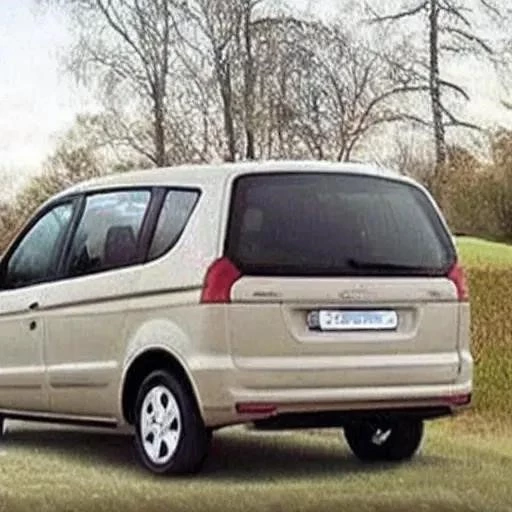
In the bustling automotive landscape, sport utility vehicles have long dominated the imagination, symbolizing adventure, rugged capability, and a certain aspirational lifestyle. Yet, beneath this pervasive narrative, a quiet revolution is unfolding, propelled by a vehicle category once relegated to the fringes of desirability: the Multi-Purpose Vehicle, or MPV. Far from the boxy, utilitarian people-movers of yesteryear, today’s MPVs are sleek, sophisticated, and incredibly versatile, poised to redefine our understanding of family mobility and functional luxury. They are not just evolving; they are reclaiming their rightful place as the quintessential family vehicle, seamlessly blending practicality with cutting-edge design and technological prowess.
What exactly constitutes an MPV vehicle, and why is its resurgence so compelling? At its core, an MPV is meticulously engineered around the principle of maximizing interior space, offering unparalleled flexibility for both passengers and cargo. Unlike SUVs, which often prioritize off-road aesthetics or towing capacity, MPVs are singularly focused on occupant comfort, ease of access, and adaptable configurations, making them remarkably effective for everything from daily commutes to epic cross-country adventures. This foundational design philosophy, coupled with modern advancements, positions them as a profoundly intelligent choice for discerning consumers seeking genuine utility without compromise.
| Category | Description |
|---|---|
| Definition | A Multi-Purpose Vehicle (MPV), also known as a minivan or people mover, is designed to offer maximum interior space, flexible seating arrangements, and superior comfort for passengers, distinguishing itself from SUVs and sedans primarily through its emphasis on utility and passenger capacity. |
| Key Characteristics | High roofline, typically featuring sliding rear doors, three rows of highly configurable seating, expansive cargo volume, and a car-like driving experience. Prioritizes interior ergonomics and accessibility, often resembling a spacious, elongated hatchback. |
| Core Benefits | Unmatched interior versatility for passengers and cargo, superior comfort (especially in the third row), effortless entry/exit, often better fuel efficiency than large SUVs, and a smooth, stable ride quality. Ideal for families and group transport, offering a genuinely practical solution. |
| Target Audience | Large and growing families, individuals with active lifestyles requiring significant cargo space for hobbies (e.g., cycling, camping gear), and small businesses needing flexible passenger and goods transport. Essentially, anyone valuing space, comfort, and adaptability. |
| Notable Examples | Toyota Sienna, Honda Odyssey, Kia Carnival, Chrysler Pacifica, Mercedes-Benz V-Class, Volkswagen Multivan. These models showcase the segment’s diverse offerings and innovative features. |
| Future Trends | Increasing adoption of electric powertrains (eMPVs), integration of advanced driver-assistance systems (ADAS) and autonomous features, modular and highly customizable interior concepts, and enhanced connectivity, transforming them into mobile smart hubs. |
| Reference Link | Edmunds: Top-Rated Minivans & MPVs |
The transformation of the MPV is nothing short of remarkable. Gone are the days when these vehicles were derided as uninspired “mom-mobiles.” Today’s offerings, like the incredibly stylish Kia Carnival or the remarkably efficient Toyota Sienna hybrid, are challenging perceptions with their aggressive styling, premium interiors, and advanced technological suites. Designers are thoughtfully crafting exteriors that exude confidence and sophistication, effectively blurring the lines between traditional minivans and luxury crossovers. Inside, the emphasis remains steadfastly on intelligent design: flexible seating that folds, slides, or even disappears, creating cavernous spaces for everything from sports equipment to camping gear. This adaptability is incredibly potent, serving diverse family needs with an effortless grace.
Beyond aesthetics, the resurgence is deeply rooted in engineering advancements. Modern MPVs boast more refined driving dynamics, offering a smooth, car-like ride that many larger SUVs struggle to replicate. Fuel efficiency, a perpetually vital consideration for families, has seen substantial improvements, with hybrid and even fully electric MPV variants now entering the market, promising a greener, more sustainable future for family travel. Safety, paramount for any family vehicle, is also a core strength, with many MPVs receiving top ratings and integrating cutting-edge driver-assistance systems, ranging from adaptive cruise control to lane-keeping assist, protecting precious cargo with vigilance.
According to leading automotive analyst Dr. Evelyn Reed, “The MPV segment is undergoing a profound renaissance, driven by consumer demand for authentic utility and a critical shift away from the perceived necessity of rugged SUV aesthetics. Manufacturers are responding with innovations that make these vehicles not just practical, but genuinely desirable, anticipating the multifaceted needs of contemporary families.” Her insights underscore a pivotal trend: consumers are increasingly valuing true utility and thoughtful design over mere rugged appearance, recognizing the unmatched benefits an MPV delivers for daily life.
Looking ahead, the future of the MPV vehicle is incredibly bright and brimming with innovation. We are witnessing the dawn of electric MPVs, offering silent, emissions-free travel without sacrificing space or capability. Autonomous driving features are beginning to integrate seamlessly, promising enhanced safety and a more relaxed journey for everyone aboard. Imagine a vehicle that intelligently navigates traffic while passengers enjoy a mobile living room, complete with integrated entertainment systems and ergonomic seating designed for ultimate comfort. These aren’t futuristic fantasies; they are the tangible realities swiftly approaching, profoundly reshaping the very concept of family transportation.
